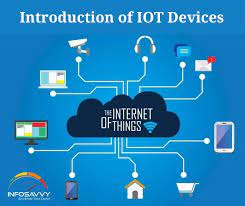The Internet of Things (IoT) refers to the network of physical objects, devices, vehicles, buildings, and other items embedded with sensors, software, and connectivity capabilities that enable them to collect and exchange data over the internet. IoT allows these objects to interact with each other and with humans, creating a web of interconnected devices that can monitor, analyze, and respond to their surroundings.
Key Concepts of IoT:
- Connectivity: IoT devices are connected to the internet or to each other, enabling data exchange and communication. This connectivity can be established through various technologies such as Wi-Fi, Bluetooth, cellular networks, or low-power wide-area networks (LPWAN).
- Sensors and Actuators: IoT devices are equipped with sensors to collect data from their environment. Sensors can measure physical parameters such as temperature, humidity, light, motion, and more. Actuators, on the other hand, allow IoT devices to take action based on the data collected, such as controlling a motor or adjusting settings.
- Data Collection and Analysis: IoT devices generate vast amounts of data through their sensors. This data can include real-time measurements, events, or patterns. IoT systems often employ data analytics techniques, including machine learning and artificial intelligence, to extract insights, detect patterns, and make informed decisions based on the collected data.
- Interoperability: IoT devices and platforms strive for interoperability, allowing different devices from various manufacturers to communicate and work together seamlessly. Standardized protocols, data formats, and application programming interfaces (APIs) are used to enable interoperability and ensure compatibility between devices and systems.
- Cloud Computing and Edge Computing: IoT systems often rely on cloud computing to store and process the collected data. Cloud platforms provide scalable storage, computational power, and data analytics capabilities. Edge computing, on the other hand, involves processing data at or near the source, reducing latency and bandwidth requirements by performing computation and analysis locally on the devices or at the edge of the network.
- Security and Privacy: IoT security is crucial due to the sensitive nature of the data collected and the potential impact of unauthorized access or malicious attacks. Security measures include authentication, encryption, access control, and secure communication protocols to protect IoT devices and data. Privacy concerns also arise due to the potentially personal or sensitive nature of the data collected by IoT devices, requiring careful handling and compliance with privacy regulations.
- Applications and Use Cases: IoT has numerous applications across various industries and domains. Some common use cases include smart homes, industrial automation, healthcare monitoring, transportation and logistics, agriculture, energy management, and smart cities. IoT technology enables automation, optimization, and improved decision-making in these areas.
Overall, IoT technology enables the connection and integration of physical objects and digital systems, creating a network of intelligent devices that can sense, communicate, and act upon the world around them.
SHARE
